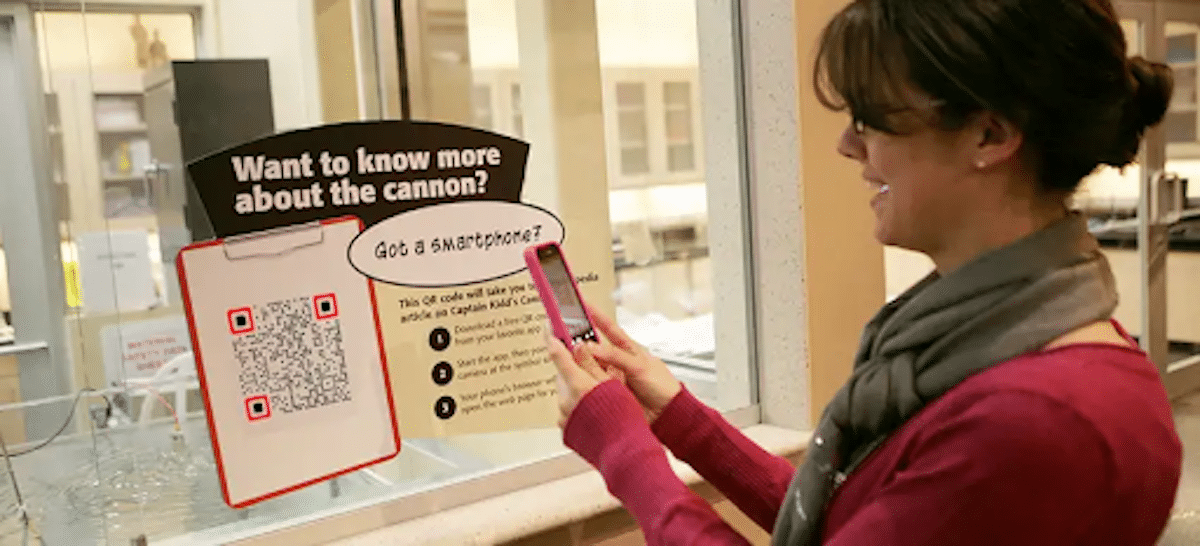The world is transitioning to a technologically dominated community. With internet and smartphone access becoming more common in people’s daily lives, the gallery and culture sector is evolving toward a more dynamic and user-friendly tourism experience for visitors who come.
Over the last decade, museums and art galleries have seen a fair proportion of unique tourist experiences from individuals of all ages.
Whether they employ traditional methods of providing extra details concerning their exhibits or creative techniques such as referring customers to a piece of information available on the internet or clip, digitalization is an inevitable trend that the arts and culture sector must adapt to.
Along with digitalization, technology such as QR codes becomes a tool for museums and other institutions to relate history directly through the screens of museum visitors’ smartphones and iPads.
Because of the pandemic’s demand for contactless engagements, QR codes have become a standard contactless method for managing every interaction requirement.
With the heightened of a QR code generator online, art directors are now employing QR codes to place additional digital information about the collection they are currently showcasing at the tour.
How do QR codes be used in galleries and on works of art?
With QR codes being used in museums and their related art pieces, here are five unique ways art directors use them in their art shows.
1. Storing teaser video link
Galleries embrace the usage of teaser videos for their forthcoming art shows to acquire additional visitors. To disseminate the clip more quickly, they utilize QR codes and position them on physical paper and in spots where individuals can scan and immediately watch the teaser trailer on their devices.
2. Sound Tours
Since most installations are supplemented by sound to set the ambiance, aural information is provided to include some intriguing information straight through to the ears of the visitors. Organizers and creative directors display audio versions of their tour via QR codes so guests can directly scan and listen to the messages conveyed, allowing audiences to identify which areas have an audio guide prepared to be listened to.
3. Tour Registrations and Surveys without Using a Pen and Paper
Modern museums incorporate tour survey forms in the premise’s exit locations to continually develop one’s institution attempts in giving the ideal visiting experiences for repeat and first-time visitors. However, because some visitors fail to submit comments, galleries get lesser recommendations for change.
As a result, astute administrators are embracing the usage of contactless tour registrations and surveys, like a QR code for registration and survey, to ensure that no tour reviews are missed, and no visitors are left at the end of the tour. With the help of their exhibition personnel, they can quickly encourage the visitor to scan the code, give their evaluation, and sign out from the time.
4. Seamless high-quality art image unpacking
Art directors utilize QR codes in museums to save extra images about the artifacts they are exhibiting to provide visitors with an exclusive glimpse of the art’s development process. By just affixing them to one of the works of art, guests may scan the code and get an unparalleled glimpse at the art’s visual narrative directly on their phone screen.
5. Mystery Games
Some museums conduct their own spontaneous mystery quests for their visitors to make the exhibition experience more entertaining and engaging. And, with each disguised hint they insert for their guests, the staff members can embrace the use of QR codes as a way to modernize their fun games.
To cure the spontaneous mystery game, art directors can incorporate a QR code generator with logo online to store the link of their digital mystery game quest.
Conclusion:
As speedier information transmissions dictate the future of galleries and other institutions, art directors and curators are embracing QR codes to link heritage to modernity.
As a bridge to easily share data and edit them, QR codes in art galleries and pieces of an artwork open a new way for art connoisseurs to experience their means of consuming art and its heritage.


